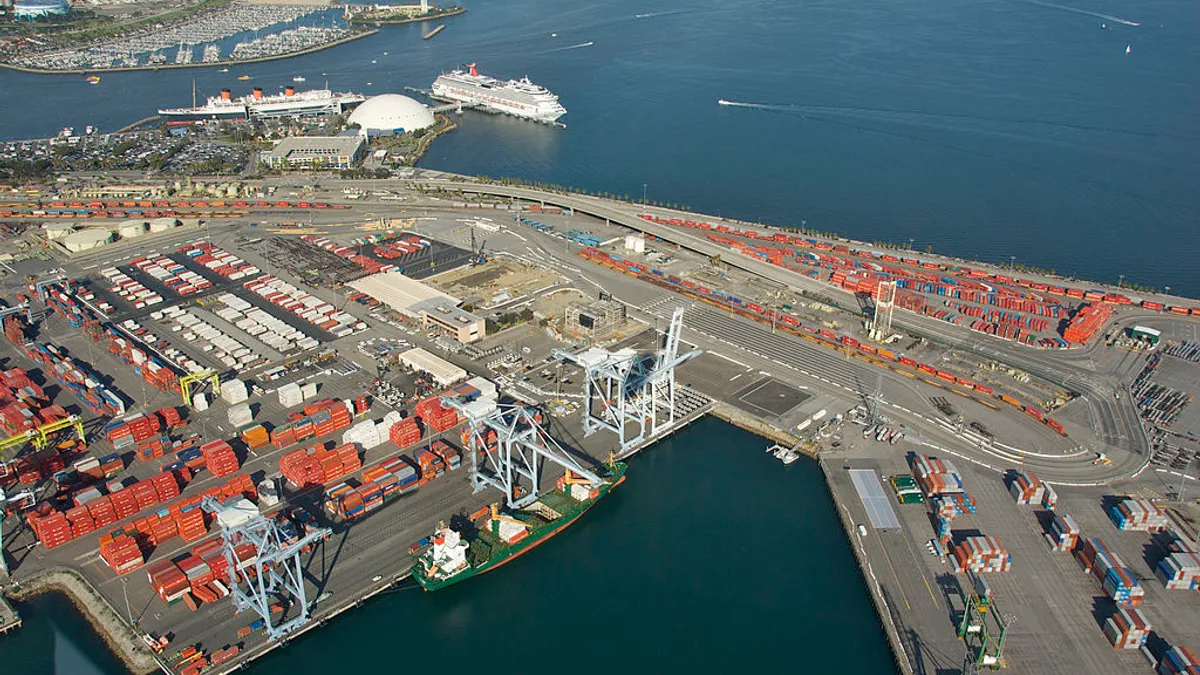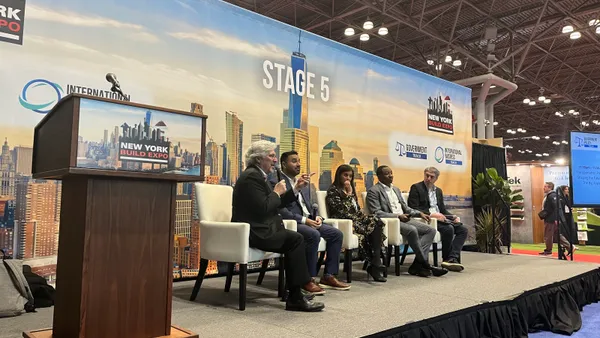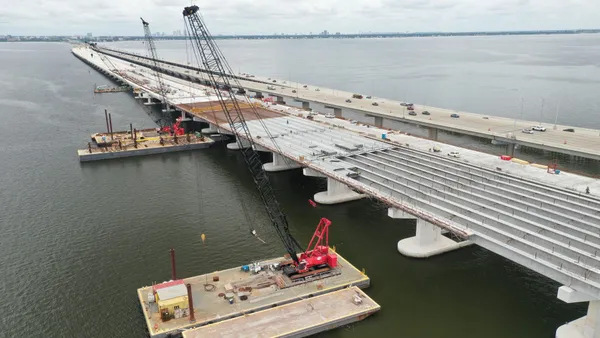Dive Brief:
- With a $4.5 billion capital program already underway, the Port of Long Beach is pursuing a zero emissions goal with the help of a new on-dock rail project, according to Engineering News-Record.
- Earlier this year, the Long Beach Board of Harbor Commissioners authorized the port to move forward with the Pier B On-Dock Rail Support Facility, which will allow shipping containers to be loaded directly onto trains at marine terminals. The current on-dock rail capability is constrained by subpar infrastructure that kept that loading method at only 24% of operations last year. As on-dock loading increases, the port will be able to decrease greenhouse gas emissions.
- The port took a financial hit in 2016 when Hanjin Shipping, its biggest tenant, filed bankruptcy and, as a result, cargo imports dropped 8.2% that year. However, the port was able to secure a replacement tenant and the next year saw record-breaking shipping activity. A new bridge and other modernization projects will allow the port to increase revenue by being able to accommodate ships carrying 22,000 20-foot shipping containers (TEU's) in an industry where processing a ship carrying even 18,000 TEU's is limited.
Dive Insight:
U.S. consumers are driving an increase in U.S. seaport activity, according to the Hellenic Shipping News Worldwide. Imports into the U.S. increased more than 4% last year and nearly 8% in January, although the January figure included post-holiday restocking and a rush to fill orders before a major international holiday.
This increase in shipping activity is also driving expansion projects as ports try to modernize and increase capacity in an effort to beat out competitors and win more clients.
Last month, The New Orleans Advocate reported that Port of New Orleans officials were considering a $1 billion expansion on a site in another parish along the Mississippi River.
The proposed container terminal and distribution center in Meraux, Louisiana, could be a "logistics hub" for port clients, and the finished facility could create 6,000 permanent jobs. AECOM is currently conducting a $300,000 feasibility study to determine if the 675-acre site is a right fit for the port's plans. Port officials are looking at ways to expand the existing New Orleans port facilities as well.
Port Canaveral in Florida is also expanding to the tune of $2.5 billion, and revenue from port operations will be footing the bill. Planned projects will expand both cruise and cargo capacity, with three new $150 million cruise ship terminals and renovations to existing terminals.














